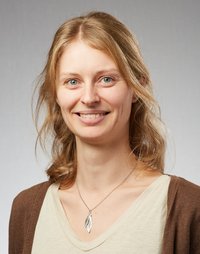MetGraz
Quantification of enteric methane production in organic cows
Danish organic milk production is closely associated with grazing, as 100% of organic dairy cows are put out to pasture from spring to autumn - in contrast to only 15% of conventional cows. In 2021, the total number of organic dairy cows in Denmark was 82,000. Regardless of the production system, cows emit the greenhouse gas methane as a natural byproduct of feed fermentation in the digestive tract (enteric methane). Studies from abroad suggest that enteric methane emission is lower when cows are grazing pasture compared to feeding a silage-based ration in the barn, although the mechanisms behind this phenomenon have not been fully explained. Since data from grazing cows are not currently available, existing climate models and the national greenhouse gas inventory do not distinguish between cows in organic and conventional systems. The significant number of grazing cows can therefore lead to an overestimation of the carbon footprint of organic milk production, and as a consequence, an increased carbon tax for the organic farmer upon implementation of the carbon tax by the Danish government.
The purpose of MetGraz
To achieve a correct accounting for grazing in existing climate models and inventories, the goal of MetGraz is to quantify enteric methane production on a cow-level basis (g/d, g/kg dry matter intake, and g/kg milk yield). At the same time, the underlying mechanisms for the potential methane reduction during grazing compared to feeding a silage-based ration in the barn are investigated and the carbon footprint of organic milk production is revised. The expected result of MetGraz is that cows on pasture have lower methane emissions than cows fed a silage-based ration in the barn. The necessary data to support the expected result will be collected in the scientific part of the project.
The project's major effects are for both the scientific part and the overall project:
- Within green sustainability: Accurate numbers on enteric methane emissions from grazing dairy cows will result in an improved estimation of the carbon footprint of organic milk production, thereby demonstrating the expected climate benefit of grazing
- Within economic sustainability: Organic farmers may incur lower carbon taxes if methane emissions are proven to be lower during grazing than with indoor feeding of a ration.
Overall, MetGraz has the potential to increase the credibility of organic milk production from both a consumer and a societal perspective.
The project step-by-step:
- Conducting a standardized experiment to measure enteric methane emissions from dairy cows grazing
- Collecting data on methane emissions from dairy cows in established organic farms
- Utilizing the generated data as input in existing climate models to optimize calculations of the carbon footprint of organic milk production
- Communicating the results and impacts of MetGraz to relevant stakeholders.
Project period
2024-2026
Project manager

Dana W. Olijhoek
Department of Animal and Veterinary Sciences, ANIVET, Aarhus University
Mail: dana.olijhoek@anivet.au.dk